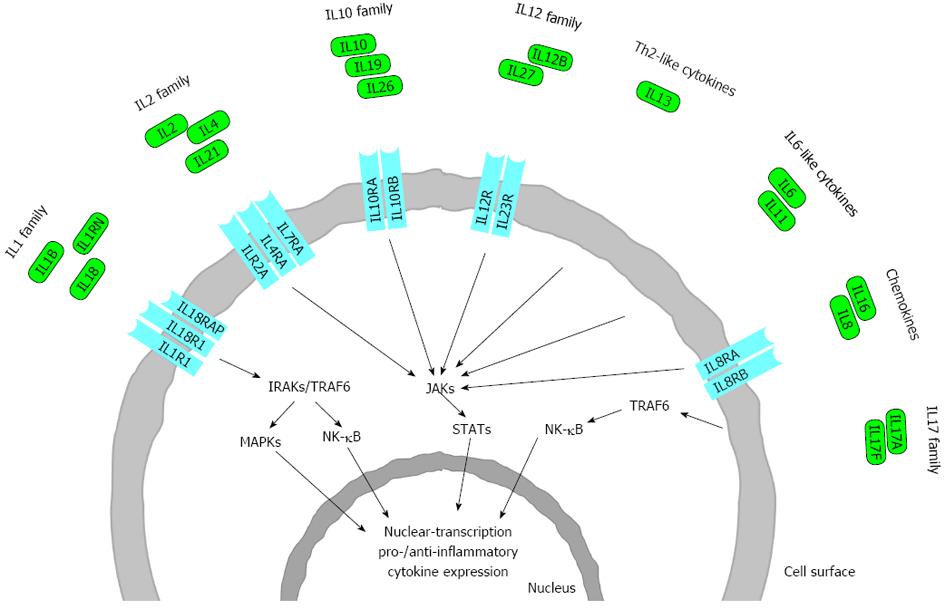Copyright
©2014 Baishideng Publishing Group Co.
World J Gastroenterol. Mar 28, 2014; 20(12): 3208-3222
Published online Mar 28, 2014. doi: 10.3748/wjg.v20.i12.3208
Published online Mar 28, 2014. doi: 10.3748/wjg.v20.i12.3208
Figure 2 Schematic representation of the interleukin families and receptors involved in the pathogenesis of inflammatory bowel disease.
Only those interleukins (IL) and IL receptors (ILR) are shown where studies have demonstrated association between genes/single nucleotide polymorphisms (SNPs) and disease phenotype. ILs are assigned to each family based on sequence homology and receptor chain similarities or functional properties, considerable overlap between these families exists. Polymorphisms in genes encoding ILs and ILRs have been found to be involved in inflammatory bowel disease. Ligand binding initiates intracellular phosphorylation cascades that are mediated by kinases (i.e., IL1 receptor associated kinase (IRAK); mitogen-activated protein kinase (MAPK); Janus kinase (JAK) and TNF receptor associated factor (TRAF), resulting in signal transduction through certain transcription factors [including signal transducers and activators of transcription (STAT); nuclear factor kappa-light-chain-enhancer of activated B cells (NF-κB)]. These transcription factors stimulate the expression of a number of proinflammatory and anti-inflammatory cytokine genes involved in inflammatory bowel disease (IBD).
- Citation: Magyari L, Kovesdi E, Sarlos P, Javorhazy A, Sumegi K, Melegh B. Interleukin and interleukin receptor gene polymorphisms in inflammatory bowel diseases susceptibility. World J Gastroenterol 2014; 20(12): 3208-3222
- URL: https://www.wjgnet.com/1007-9327/full/v20/i12/3208.htm
- DOI: https://dx.doi.org/10.3748/wjg.v20.i12.3208









